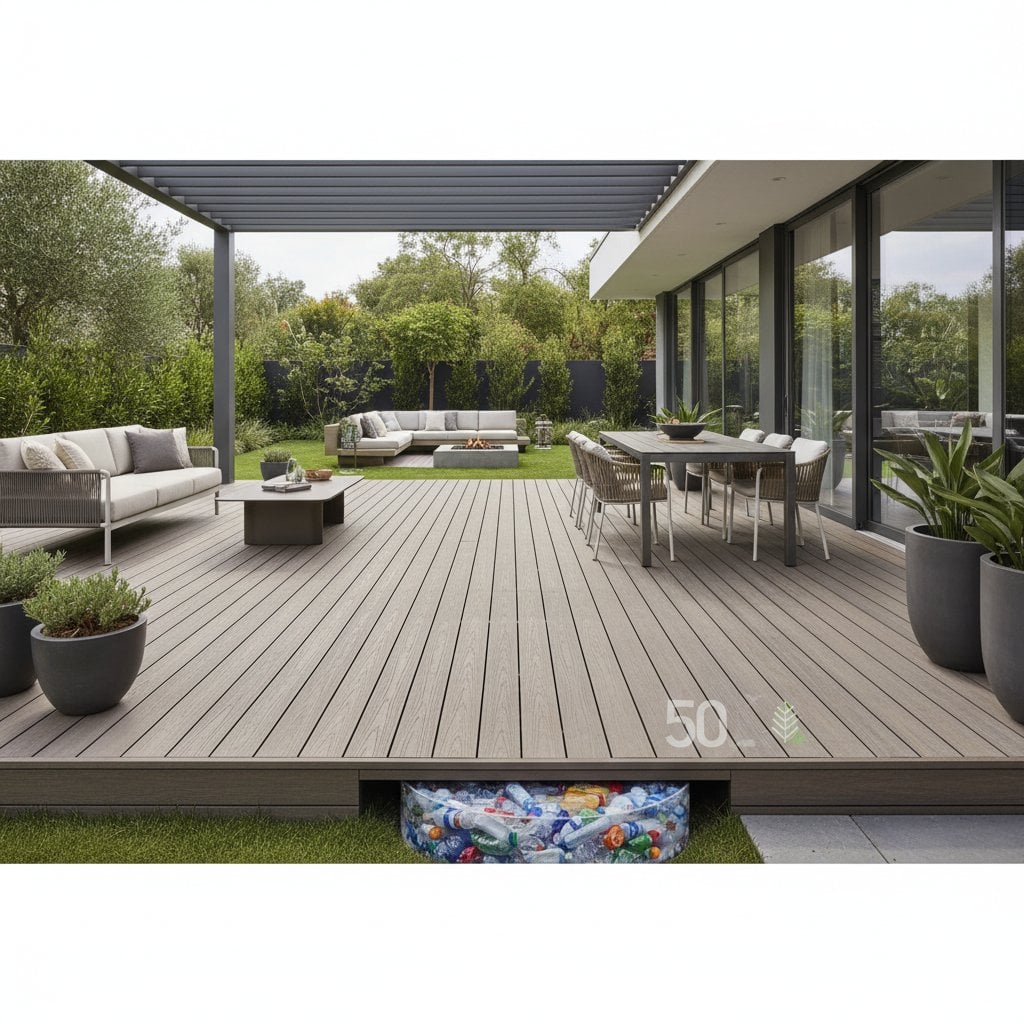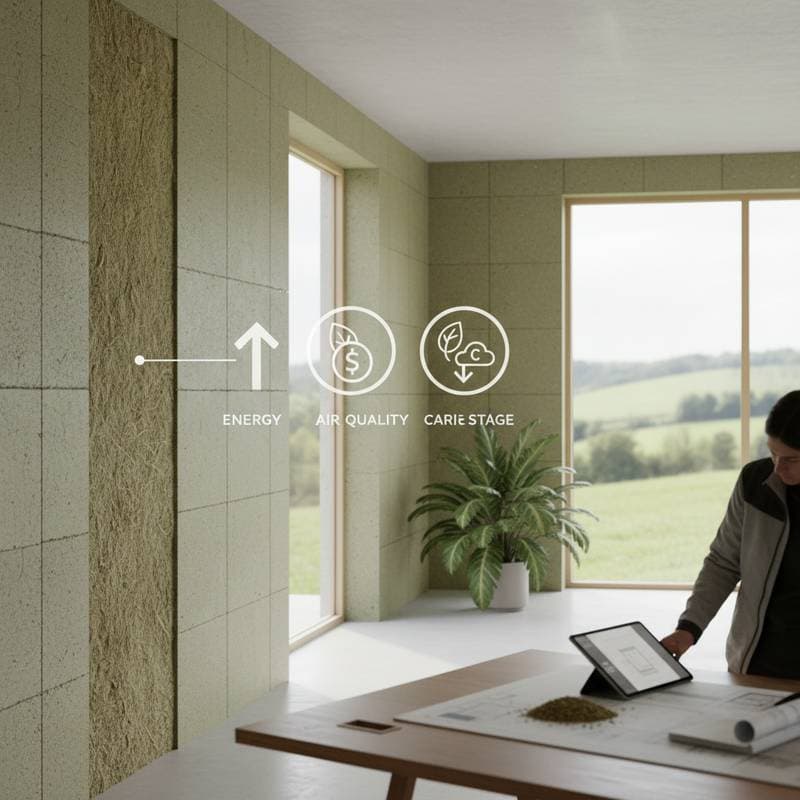Understanding Hempcrete as a Sustainable Building Material
Hempcrete consists of hemp hurds, lime, and water, forming a lightweight, breathable composite ideal for insulation. This material excels in regulating indoor temperatures through its high thermal mass, which absorbs excess heat during the day and releases it gradually at night. Builders apply hempcrete in walls, roofs, and floors, where it provides insulation without compromising structural integrity.
The production process emphasizes renewability. Hemp plants mature in just three to four months, requiring minimal irrigation and no chemical fertilizers in many cases. Once mixed with lime, the resulting hempcrete cures slowly, enhancing its environmental profile over the building's lifespan.
Homeowners benefit from hempcrete's natural composition, which avoids synthetic additives common in conventional insulations. This leads to improved indoor air quality, as the material resists off-gassing and promotes humidity balance. In regions with variable climates, such properties make hempcrete a practical choice for energy-efficient living.
Key Sustainable Features and Performance Benefits
Hempcrete's carbon-negative attributes set it apart from standard building materials. During growth, hemp absorbs atmospheric carbon dioxide at rates up to ten tons per hectare. The lime binder then reabsorbs additional CO2 as it cures, effectively locking away carbon for decades within the structure.
Fire resistance further enhances safety. When exposed to flames, hempcrete forms a protective char layer that prevents ignition and limits smoke production. This characteristic meets stringent building standards in fire-prone areas, offering reassurance to residents and reducing insurance premiums in some markets.
The material also demonstrates resilience against environmental threats. Its alkaline nature deters mold growth and pest infestation, eliminating the need for chemical treatments. Over time, hempcrete maintains its insulating properties, unlike foam boards that can compress or fiberglass that may settle, ensuring consistent performance.
Efficiency gains extend to acoustics and moisture management. In urban settings, hempcrete dampens external noise, creating quieter interiors. Its vapor-permeable structure allows walls to breathe, preventing condensation issues that plague impermeable insulations and contribute to structural decay.
Cost Analysis and Return on Investment
Initial expenses for hempcrete often exceed those of fiberglass or mineral wool by 15 to 30 percent, depending on project scale and location. Sourcing hemp hurds and lime, combined with specialized mixing, drives these costs. However, regional availability is increasing, which may narrow the price gap in coming years.
Energy savings provide a primary offset. By minimizing heat loss and gain, hempcrete can lower heating and cooling demands by 20 to 40 percent. In a moderate climate, a typical 2,000-square-foot home might save 500 to 1,000 dollars annually on utility bills, based on average energy rates.
Durability contributes to long-term value. Hempcrete withstands settling and degradation, potentially lasting 100 years or more with basic upkeep. This reliability reduces replacement costs, which for traditional insulations can recur every 20 to 30 years.
Market trends favor sustainable homes. Properties featuring hempcrete often appreciate faster in eco-aware communities, with premiums reaching 5 to 10 percent over comparable conventional builds. Environmental certifications, such as LEED, become more attainable, appealing to buyers seeking green credentials.
Quantifying carbon benefits remains challenging but influential. While not directly monetized, the material's sequestration aligns with carbon credit programs and enhances a property's sustainability rating. Overall, payback periods range from 7 to 15 years, influenced by local energy prices, home size, and climate severity.
Design Applications and Aesthetic Options
Hempcrete supports diverse architectural styles through its adaptability. In new constructions, builders cast it into forms around timber frames, creating monolithic walls up to 12 inches thick for optimal insulation. Retrofitting existing structures involves infilling cavities or adding external layers, minimizing disruption to current layouts.
Creative finishes expand design possibilities. Exposed hempcrete offers a textured, organic appearance suited to modern or rustic interiors. For a refined look, apply lime-based plasters in colors ranging from soft whites to earthy tones, or use breathable paints that preserve the material's moisture-regulating qualities.
Integration with other elements enhances functionality. Pair hempcrete walls with passive solar designs, such as south-facing windows, to maximize thermal performance. In multi-story homes, its lightweight nature reduces foundation loads, allowing for innovative floor plans without excessive engineering.
Urban applications highlight its versatility. For apartments or townhouses, hempcrete improves soundproofing between units, addressing common noise complaints. Roof applications, often as a lightweight infill, combine insulation with green roofing potential, supporting vegetation that further cools buildings.
Addressing Common Concerns
Installation Challenges
Hempcrete demands precise preparation, including proper ratios of aggregates and water to achieve optimal strength. Professional teams use specialized equipment for large pours, ensuring even curing over several weeks. Smaller DIY efforts, like patching or garden walls, succeed with online tutorials and basic tools, though certification courses build confidence for bigger tasks.
Structural Role
Hempcrete functions as an infill, not a load-bearing component. It complements wooden or steel frames, providing enclosure and insulation without supporting weight. This hybrid approach maintains flexibility in design while leveraging the material's non-structural advantages.
Impact on Living Space
Thicker walls, typically 8 to 16 inches, slightly reduce interior square footage. Yet, the enhanced comfort from stable temperatures and natural light reflection often outweighs this. Savvy designers incorporate niches or built-ins to reclaim space, turning potential drawbacks into functional features.
Steps to Integrate Hempcrete into Your Project
Begin by assessing your site's specifics, including local climate and soil conditions that affect hemp growth if sourcing locally. Consult building codes, as approvals for hempcrete vary by jurisdiction; some areas now classify it as a standard green material. Engage architects experienced in bio-based constructions to model energy performance using software tools.
Secure financing by highlighting ROI projections. Energy audits can demonstrate savings potential, while grants for sustainable builds may offset upfront costs. Select suppliers vetted for quality, ensuring hemp hurds meet density standards for consistent results.
During construction, monitor curing to avoid cracks from rapid drying. Post-installation, maintain the material with periodic inspections for plaster integrity. Over time, enjoy a home that not only conserves energy and sequesters carbon but also fosters well-being through its natural resilience.










